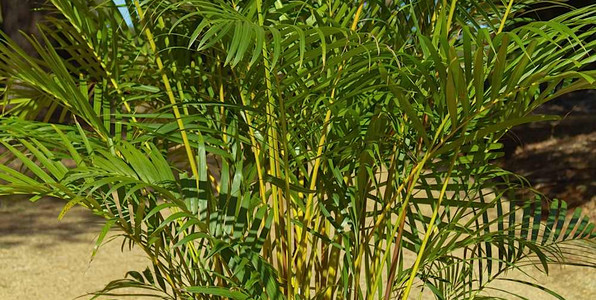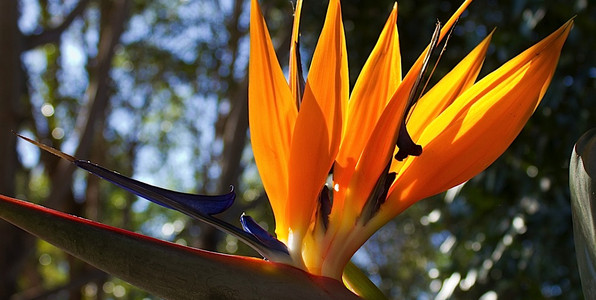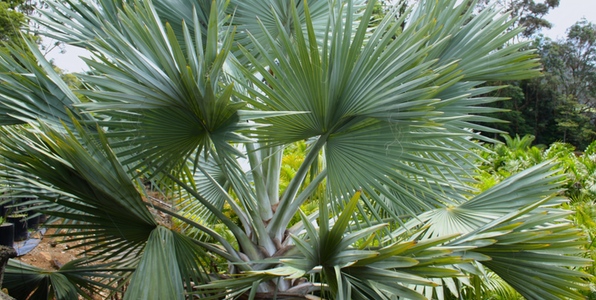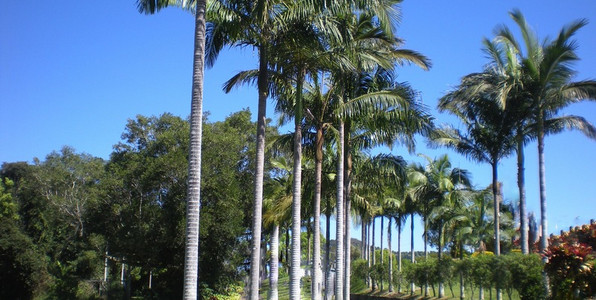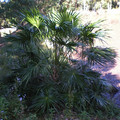Jump to page 2 | 3 | 4 | 5 | 6 | 7 | 8 |
The Right Palms to Grow Indoors
Palms are wonderful indoors. They are relatively low maintenance, attract comparatively fewer pests, and provide a truly natural and serene feel to your space. They provide a tropical look to your office and home and are known for purifying the air.
Some of the varieties that can be used indoors include:
Bamboo Palm (Chamadorea seifrizii),
Cascade Palm (Chamaedorea cataractarum
Kentia Palm (Howea forsteriana )
Golden Cane Palm (Dypsis lutescens), Kentia Palm(Howea forsteriana),
Lady Palm (Rhapis excelsa),
Parlour Palm (Chamaedorea elegans) ,
Walking Stick Palm (Linospadix monostac).
While most of these are available at nurseries in various stages of growth, it is advisable to ask a professional as to which species is best for your particular area. Different species will react differently to the atmospheric conditions in your area. Getting a species that is ideally suited to your area will cause lower frustration and require less work.
Palms, like any other plant, need a fairly delicate balance of moisture, fertilizer, light, as well as warmth, for them to thrive. Peat moss or leaf mold, along with a mixture of soil with sand, and loam, is the preferred combination for indoor palms. The soil should be rich, well drained, and moist. Soggy soil should be avoided.
Watering should be carried out carefully, with healthy amounts of water while they are growing, and lower amounts in the winter. Bright light is usually good for most species and they should, therefore, be placed in the brightest areas of your house. Palms also thrive in artificial light.
Palms should not be kept near a heat source as these can cause drying of the leaves. To maintain humidity in the room it is recommended to place a water pan in the vicinity of the pot.
The warm season is the growing season for Palms. Healthier growth will be achieved if a balanced fertilizer is used about once a month. Dusting the plant leaves with a green mist on a daily basis will keep them lush and green. However, in the winters you can reduce the frequency and amount of green mist. Dust on the leaves can be wiped down with a wet cloth.
Mealy bugs and spider mites are the most common pests that are attracted to indoor palms. Natural neem oil and insecticidal soaps are recommended to keep them at bay. White oil can be used for white palm scale but an insecticide is needed for the larger pink scale or black scale. Small amounts of scale can be removed by hand. Scale is not a major concern but it looks unsightly on palms.
What steps do you need to take in order to know how to choose the best palms for your home's interiors?
Know the extent of your commitment to grow the palm. Some indoors palm varieties require regular watering. If you cannot bring yourself to fully dedicate your time to the task, ask someone to do it in your absence.
Easy maintenance also means you need to look for indoor palms that are not vulnerable to pests and diseases.
Understand the general weather conditions inside your house and outdoors. These can have a huge impact on the overall health and survival of your indoor palms. Palms require sunlight whatever their tolerance level is. As plants they need the sun's rays to produce their own food - process of photosynthesis.
Provide a heating system when and where necessary. This goes for areas that experience colder months. Some indoor palms may not be cold hardy and in spite of being sheltered inside your home, may still have low tolerance for cold temperatures.
Identify the spots where you want to place your palm. Do research on the average height of the indoor palm to identify where it can be placed with respect to its height. Plants love being taken out in the rain or a shady location for hosing gently on a regular basis. Or even swap a plant that has been growing on the back veranda. Your palms and other plants will look better with a rest and they will last more than twice as long.
Now that you have the basics of how to choose the right palm to decorate your indoor environment, you will need some suggestions on the most popular indoor palms.
Lady Palm (Rhapis excelsa)
This is a lovely clumping fan palm and is possibly the best indoor palm. It will tolerate low light and dry conditions and is a native to southern China and Taiwan. It may be divided into separate plants.
Kentia Palm (Howea forsteriana)
This Australian palm is very popular as an indoor palm throughout the world. They are a slow growing palm especially indoors. They are a single trunked feather leafed palm. When planted in the ground they can grow up to 10 metres in height.
Fishtail Lawyer palm (Calamus caryotoides)
The Fishtail Lawyer Cane is a climbing palm that is endemic to the tropical forests of Queensland. Grown indoors, this palm can survive even a dimly lit room. It has fishtail-like leaves and can grow up to 15 metres in its natural habitat.
Pony Tail Palm (Beaucarnea recurvate)
When planted on the ground, the Pony Tail Palm can tower over 8 metres. Indoors, the height can be controlled by prevailing conditions such as the amount of sunlight and water. Its caudex, which lies partially above ground, makes it a popular indoor palm.
Golden Cane (Dypsis lutescens)
This is clumping palm tolerates indoors where it will grow a greener colour than outside, it stays a manageable size in a pot and excepts being root bound and low on water.
Growing palms indoors gives your interior the look of a tropical paradise right in your own home. The greater benefit, however, is getting visual and physical therapy from taking care of the rich green foliage.
Chinese Fan Palm (Livistona chinensis)
This palm is native to Japan and Taiwan and is slow growing in a pot but will tolerate semi- shade.
Walking Stick Palm (linospedix monostachya)
This palm is native to the Australian subtropical rainforests and grows naturally to 2 to 3 m. It is a slow grower a
Palms: Fast Growers and How to Care For Them
Palms provide natural canopy and beauty to any garden or landscape. Their soft appearance makes any garden atmosphere cool and relaxing, much like a tropical paradise.
Like most other plants, palms take a while to grow. But if you cannot wait for your tropical paradise to arise, there are fast growing varieties
Bangalow Palm (Archontophoenix cunninghamiana)
Endemic to the central eastern coast of Australia, the Bangalow Palm thrives in this rainforest region. Growing at an average of almost a metre per year, this palm can reach a height of 25 metres. Its physical features resemble that of another variety of the genus Archontophoenix, the Alexandra Palm.
Exotic, Small and Dangerous Palms
Some Exotic Palms
Bottle Palms (Hyphorbe lagenicaulis)
They are native to the Mascarene Islands, located just east of Madagascar. They are capable of growing 3 to 6 metres, but they usually stay closer to the low end of that range. They feature a grey, bottle-shaped trunk with a distinctive green crown shaft and pinnate (feather-like) leaves. The Bottle Palm has white flowers and small, black berries. They are suitable for indoor and outdoor use and are easy to maintain. However, they grow slowly and are not particularly frost-tolerant. They thrive in shade and partial shade.
Cold and Frost: Choosing the Right Palm
Cold Hardy Palms
As the name implies, palms that can accommodate cold climates are cold hardy palms. It is generally hard to pinpoint which palm type is the best to take care of during a cold winter spell since many growers and nurseries have accounted for different experiences regarding this. Some palm types were able to withstand the cold spell for this particular area while for some regions these palm types barely survived.
The main reason for the variety of experiences is that the cold spell for regions tends to differ. The environment does not possess a general cold temperature so depending on the region, the cold spell may be much colder or less cold than other areas. Thus, it is first important to determine the extent of the cold spell in your area before you decide to choose a type of palm. How cold can it get? Look at what is already growing well in your area.
Some of the factors to be considered include presence or lack or summer heat, intensity of the sun, humidity and opposite temperatures. Determine how cold it can get during the night and during the winter. In Australia cold tolerant generally means being able to live through frost. In Nth America it may mean surviving something colder. In this case, the palm type may be narrowed down to the more resilient to cold temperatures. If you are looking for a good cold hardy palm then go for the Windmill palm.
The Windmill palm otherwise known as the Trachycarpus fortunei has turned out to be one of the most popular and commonly used plants for a range of temperatures. This species possesses several characteristics, which make it appropriate for cold weathers.
There are two general traits that a windmill palm has which makes it possible to survive the cold spell: brown-black type of burlap-hair with insulating capabilities and slow growth. The good thing about the burlap-like hair is that it keeps the trunk warm even when the winter comes and ravages the environment.
To properly determine whether a specific plant type can survive in the cold it is best to first measure the temperatures of the garden before purchasing. Find out the minimum overnight winter temperature and if necessary the maximum summer temperature.
Other cold hardy palms for Australia are
The Cabbage Palm (Livistona Australis) is native to the east coast of Australia and also has minor serrations. Also Chinese Fan Palm ( Livistona. Chinensis)
The Cotton Palm ( Washingtonia filifera.). These palms grow tall 20 metres and have serrations on the stems of the fronds
The Nikay (Rhopalostylis sapida) comes from New Zealand and is called the feather duster palm because of the shape of its frond. It's the most southerly growing palm and the Maoris would eat the heart, making baskets from the rest.
The European Fan (Chamaerops humilis) comes from around the Mediterranean. It's the most northerly growing palm, to about 3 metres and is a clumping palm. It is slow growing as with most cold palms the exception is the cottons.
The Chinese Windmill (Tracarpus fortunei) comes from China, is very cold tolerant and is a single trunked fan palm with thatching around its trunk.
The Lady Palm (Rhapis excelsa) comes from China, is a clumping fan palm, which makes a lovely indoor plant and will also grow outside in partly shaded places.not for full sun. eventually growing to 4 metres
The Cocos (Syagrus romanzoffiana) comes from South America, it is very common as a garden palm in Australia and considered a weed in the top half but is a reliable palm for the south.
The Canary Is Date (Phoenix canariensis) comes from the Canary Is and a large one in your yard is quite a status symbol. They are slow growing.
The Dwarf Date (Phoenix roebelenii) comes from Laos and is a feather leafed single trunked palm growing to about 2 metres.
The Foxtail Palm (Wodgetia bifurcata) comes from above Cairns but also will grow in cold areas and does well in protected places around Canberra with trees to save it from the setting frost.
The Sago Palm (Cycas revoluta). short
The Senegal Date Palm (Phoenix reclinata) comes from Africa and is a clumping palm with lots of bad spikes.
The Wine Palm (Butia capitata). single trunk growing to about 4 to 6 metres
Low Maintenance Palms
To add a relaxed tropical vibe to your backyard or living room, experiment with some "Low Maintenance Palms" Australia offers some beautiful hassle free choices for gardeners.
Feathery Foxtail Palms (Wodyetia bifurgata), Coconut Palms (Cocos nucifera), MacArthur Palms (Ptychosperma macarthurii) and for a unique addition, try Gebang Palms (Coypha utan)
They have prickly skins and can withstand most climate changes and will flourish.
Palms for the Ocean or Beach
No beach or tropical island photo is complete without the proverbial palm in the background. But have you ever wondered how it got there and how it got so big? There are many ways to plant a palm but not all are effective, especially when planting in a beach or sandy area.
Know the right type of palms for the soil available
The beach more often than not has sandy soil. It provides good water drainage for plants that don't require too much moisture in the soil.
